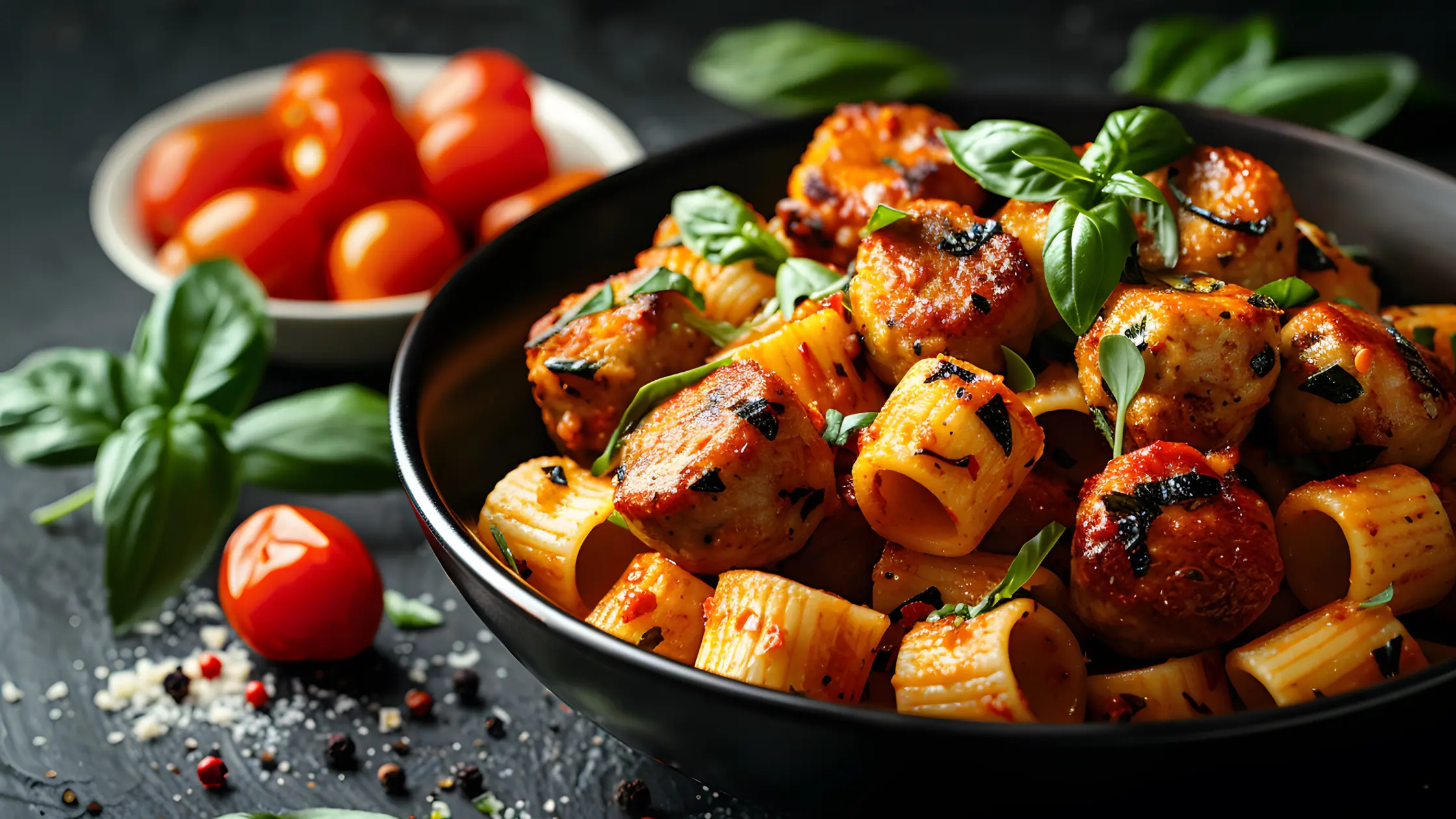Protein pasta has swiftly emerged as a revolutionary alternative in the world of nutrition, particularly for expectant mothers and growing children. But what is it about this pasta that has made it a preferred choice for those seeking to optimize their health? Why is protein pasta becoming a staple in homes where nutrition is prioritized, especially for pregnancy and child nutrition? In this comprehensive guide, we’ll explore every facet of protein pasta, examining its composition, benefits, nutritional value, and its critical role in supporting maternal and child health.
What is Protein Pasta?
Protein pasta is pasta made from ingredients that are rich in protein, such as legumes (chickpeas, lentils), quinoa, or even edamame. Unlike traditional pasta, which is primarily made from refined wheat, this pasta is designed to offer a substantial protein boost without compromising on taste. The texture is often slightly different from traditional pasta, but the nutritional profile is significantly enhanced.
Common Ingredients in Protein Pasta

- Chickpea Flour: Chickpeas are high in protein and fiber, making them an excellent choice for creating protein pasta. They offer a good source of iron, magnesium, and vitamin B6, which are crucial for both pregnancy and child development.
- Lentil Flour: Lentils are another popular base for pasta with high protein , providing a complete source of protein, as well as significant amounts of iron, folate, and potassium—critical nutrients for prenatal health.
- Quinoa: Most of us are familiar with quinoa as one of the only complete proteins derived from plants (it contains all nine essential amino acids), so a quinoa-based protein pasta is an excellent option if you want a complete protein.
- Edamame and Soybeans: Edamame pasta, made from soybeans, is rich in protein and contains high levels of essential fatty acids, iron, and fiber, which are important for both pregnancy and childhood growth.
Each variety of pasta with high protein is designed to provide higher protein levels than traditional pasta, making it an excellent way to enhance your diet without compromising on the joy of eating pasta.
Why is Protein Essential During Pregnancy?
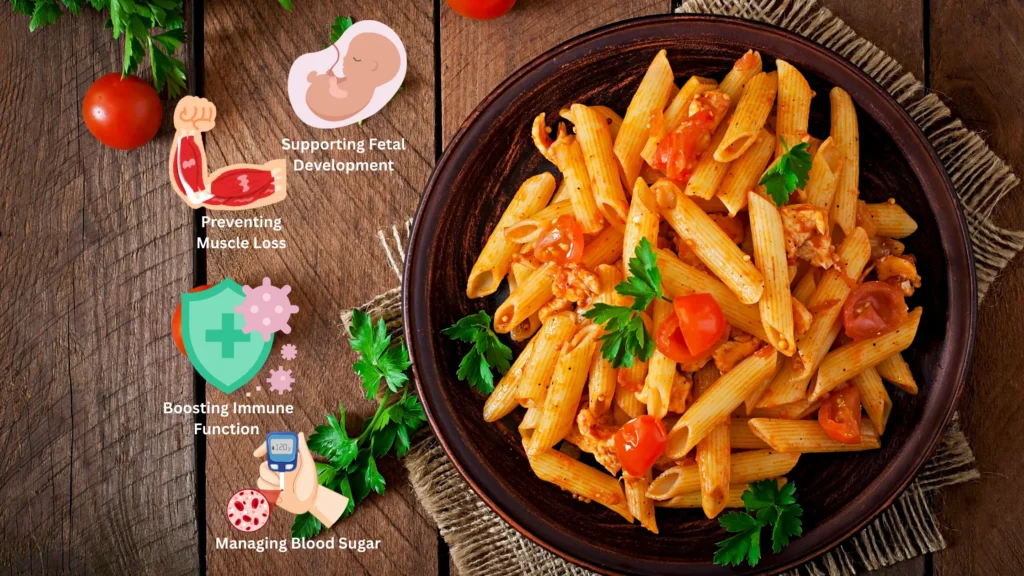
The nutritional requirement of pregnancies is a strong burden on a pregnant woman and protein is a central nutrient to both the well-being of the mother and the baby. Adequate quantities of protein are also important in tissue growth, muscle and organ development, including the placenta.
1. Supporting Fetal Development
During pregnancy, the baby’s organs, muscles, and bones are forming, and protein is a key building block of this growth. It is also vital for the development of enzymes and hormones that regulate pregnancy functions.
In particular, protein pasta made from chickpeas, lentils, or quinoa is rich in amino acids—the building blocks of protein—that are essential for these developmental processes.
2. Preventing Muscle Loss
It is possible that as the body of a woman adapts to the changes it experiences during pregnancy muscle mass starts to degrade when the protein intake is insufficient. High-protein diets have the benefit of retaining muscle tone and strength keeping the body strong against the physical aspects of pregnancy, and childbirth. pasta with high protein ensures that mothers can meet their increased protein needs without relying on meat or dairy, which may sometimes cause digestive issues.
3. Boosting Immune Function
During pregnancy, the immune system is stressed because the organism has to defend the mother and the growing fetus. Protein plays a major role in the creation of immunoglobulins, as well as lymphocytes. A high protein diet keeps the body in a better position to ward off infections and such is important during pregnancy.
4. Managing Blood Sugar
Maintaining steady blood sugar levels is important to prevent gestational diabetes, which affects about 2-10% of pregnant women. Unlike traditional pasta, protein pasta has a lower glycemic index, meaning it won’t cause rapid blood sugar spikes. This makes it a more suitable option for pregnant women trying to manage their blood sugar.
Protein Pasta for Child Nutrition: Why It Matters
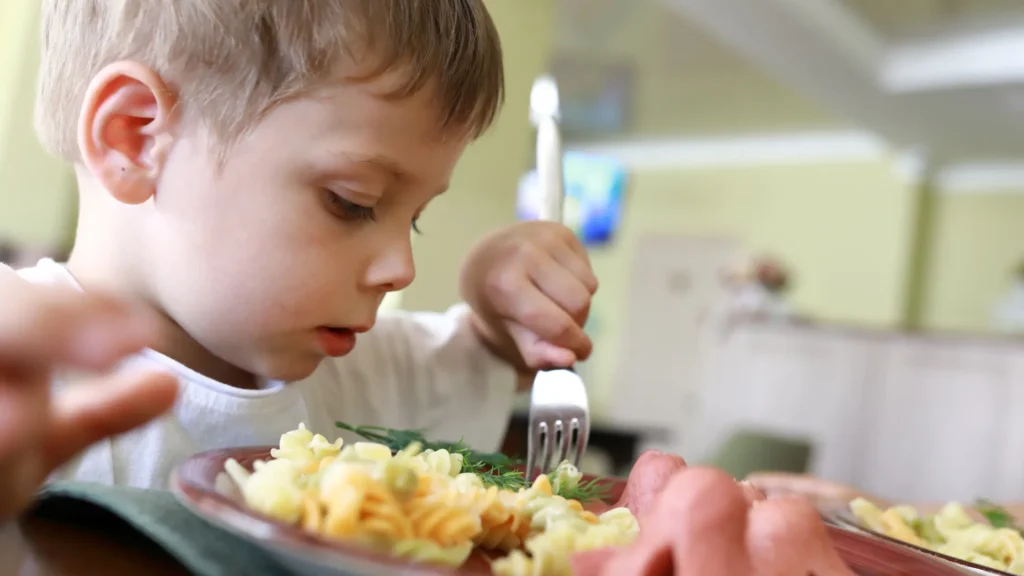
Children are growing rapidly, both physically and mentally, and require adequate nutrition to fuel this growth. Protein plays a central role in the development of muscles, bones, and tissues, as well as in the formation of enzymes and hormones that regulate bodily functions.
1. Facilitating Healthy Growth and Muscle Development
In childhood (especially during the early years), protein will help build your child’s muscle mass, and pasta with high protein is a nutrient-dense way for parents to ensure they get to their RDI without having to force supplements or processed food. on them
2. Supporting Cognitive Development
Protein does not merely promote physical growth but also promotes mental capacity. Protein is vital in brain development, which is essential at an early age in children. Protein pasta, made from nutrient-dense ingredients like lentils or quinoa, helps provide the amino acids necessary for brain function, enhancing memory, attention, and learning.
3. Strengthening the Immune System
Children have not yet developed an immune system, and they are more prone to diseases. It is beneficial to increase the immunity by resorting to a diet high in protein, which will strengthen the immune system, produce the amounts of antibodies and immune cells. With protein pasta, children get a meal packed with protein, fiber, and vital minerals, contributing to better overall health.
4. Helping Picky Eaters Enjoy Nutritious Meals
One of the biggest challenges for parents is getting their children to eat enough protein. pasta with high protein is an easy and tasty way to sneak more protein into your child’s diet, especially when served in fun shapes or mixed with their favorite sauces and vegetables. It’s a win-win for picky eaters and health-conscious parents.
How Much Protein Does Pasta Contain?
Traditional pasta is low in protein. A typical serving of regular pasta contains only around 5 grams of protein per serving. In comparison, protein pasta can contain anywhere from 10 to 20 grams of protein per serving, depending on the ingredients used. For instance:
- Barilla protein pasta has approximately 10 grams of protein per serving — almost double as much as the protein in traditional pasta.
- Pastabilities protein pasta can help get you up to 15g protein per serving if you’re a little short on protein for the day.
The elevated protein content also makes it a perfect food for pregnant women and growing children who need more protein intake to build up their health and development.
Nutritional Comparison: Traditional Pasta vs. Protein Pasta
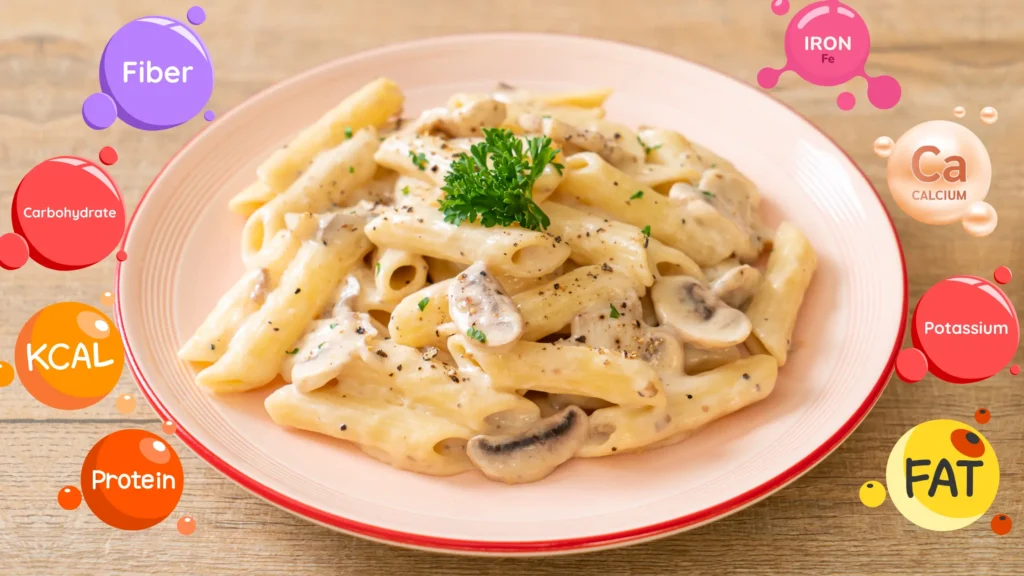
To better a pasta:
| Nutrient | Traditional Pasta (1 cup cooked) | Barilla Protein Pasta (1 cup cooked) | Pastabilities Protein Pasta (1 cup cooked) | Brami Protein Pasta (1 cup cooked) |
| Calories | 200 kcal | 190 kcal | 240 kcal | 260 kcal |
| Protein | 5 grams | 10 grams | 15 grams | 14 grams |
| Carbohydrates | 42 grams | 35 grams | 35 grams | 38 grams |
| Fiber | 2 grams | 8 grams | 8 grams | 7 grams |
| Fat | 1 gram | 2 grams | 3 grams | 6 grams |
| Sugar | 1 gram | 1 gram | 2 grams | 3 grams |
| Iron | 1.2 mg | 2.5 mg | 3 mg | 2.8 mg |
| Calcium | 15 mg | 20 mg | 40 mg | 30 mg |
| Sodium | 0 mg | 10 mg | 0 mg | 15 mg |
| Potassium | 100 mg | 250 mg | 350 mg | 300 mg |
| Vitamin A | 0 IU | 0 IU | 0 IU | 0 IU |
Key Observations:
- Protein pasta proffers much bigger portion of protein vs traditional pasta, serving as great source of fuel for everyone, and can be especially great for those who want to increase their protein intake, including pregnant and growing children.
- Fiber content is also higher in pasta with high protein , contributing to better digestion and satiety.
- Iron and calcium levels in protein pasta are higher, supporting maternal and child health.
- Potassium content in pasta with high protein is beneficial for maintaining proper muscle function and hydration.
High-Protein Pasta Salad: A Pregnancy and Child-Friendly Meal
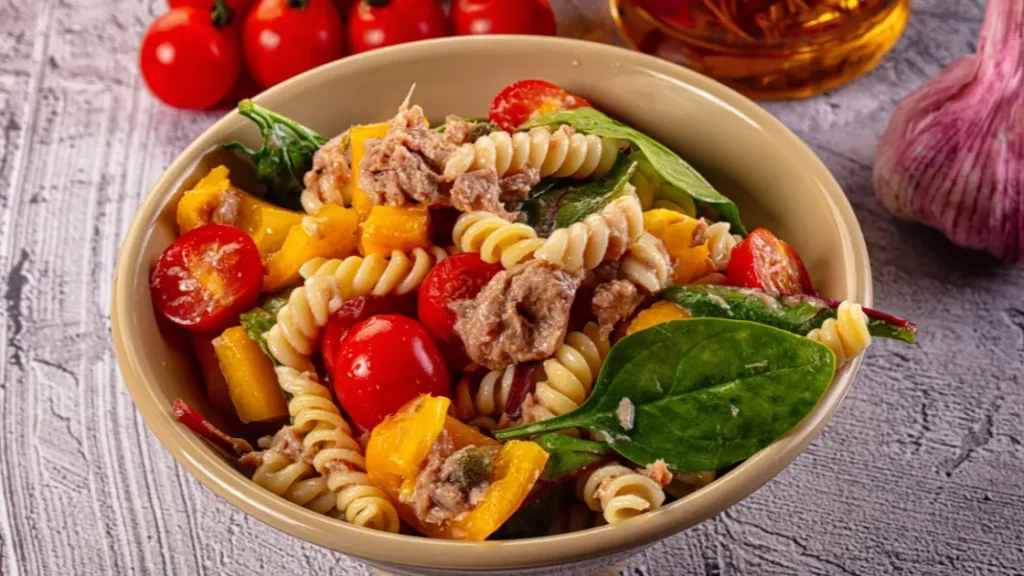
These protein pasta salads are perfect for on-the-go, so grab and go on a busy day, or you can meal prep them and grab a meal or snack for the week! Here’s a basic, tasty formula of sorts that’s filled with all sorts of good things for pregnancy and kid nutrition.
High-Protein Pasta Salad Recipe
Ingredients:
- 2 cups protein pasta
- 1 cup diced cucumber
- 1 cup halved cherry tomatoes
- 1 cup chopped bell peppers
- 1/2 cup cooked chicken (optional)
- 1/4 cup feta cheese (optional)
- 2 tablespoons olive oil
- 1 tablespoon apple cider vinegar
- Salt and pepper to taste
Instructions:
- Cook the protein pasta as directed on the package, rinsing with cold water to cool.
- Combine pasta, cucumber, cherry tomatoes, bell peppers, and chicken in a big bowl.
- In a small bowl, stir together olive oil, apple cider vinegar, salt, and pepper.
- Drizzle with the dressing and toss to coat.
- Serve at once or refrigerate for up to 3 days.
Protein Pasta Recipes: Easy and Delicious
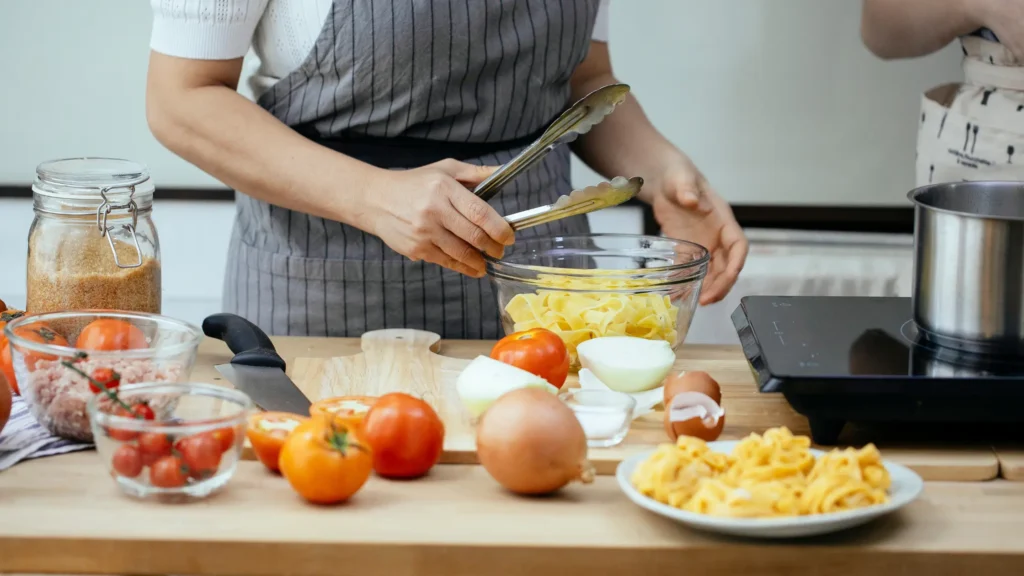
The ways to work protein pasta into your regimen are endless. Whether you’re after something very simple, or a little bit more fancy, pasta with high protein recipes are super versatile and can easily be adapted to you. Here are a few ideas:
1. Protein Pasta with Pesto
Combine pasta with high protein with a sauce of fresh basil, garlic, pine nuts, Parmesan cheese, olive oil, and age-good-for-you nuts! This dish is not just delicious, it’s also so quick and full of nutrients. It can be richened a bit more before serving by stirring in some additional olive oil and/or topping it with a dusting of. This is a lunch or dinner option where you get to have a cool and delicious meal that’s super easy to put on the table.
2. Protein Pasta Carbonara
For a hearty, protein-packed meal, make a traditional carbonara sauce with eggs, Parmesan cheese, pancetta, and garlic, then toss with protein pasta for a flavorful and filling dish. The sauce is creamy and covers every strand of pasta, so each bite is comforting. A piquant flavor is achieved with a pinch of black pepper and a garnish of fresh parsley. With seasonings and a tad bit of sugar, this wholesome, fulfilling dish is ideal to treat yourself with at any time of the day.
3. Protein Pasta with Tomato Sauce and Grilled Vegetables
Toss pasta with high protein with homemade tomato sauce, grilled zucchini, bell peppers, and onions for a nutritious, balanced meal that’s both delicious and satisfying. The mildness of the vegetables balances the acidity of the tomato sauce and makes a harmonious and complete recipe. To add an additional kick, garnish with some fresh leaves of basil or with some balsamic glaze. Not only does this dish evoke lively colors and tastes, but it is also comprised of the necessary vitamins and minerals of a healthy energy-giving lunch.
FAQ Section
What is the difference between traditional pasta and protein pasta?
Conventional pasta is usually prepared using refined wheat flour which is low in protein. pasta with high protein , however, is crafted from items such as chickpeas, lentils, or quinoa, which have a lot more protein that traditional flour, making it a great option for someone trying to up their protein intake.
Is protein pasta gluten-free?
Some protein pastas, those made with chickpeas or quinoa for example, are gluten-complete free. But keep an eye on the packaging for certification that the pasta is gluten-free if you are sensitive to gluten.
How does protein pasta support pregnancy nutrition?
Protein noodles are a good source of Protein: With protein needs at their peak for fetal development, muscle maintenance and overall health during pregnancy, this meal is packed full of protein. It also balances blood glucose levels that are important to keep in check during gestational diabetes.
Can children eat protein pasta?
Yes, protein pasta is a great option for kids, it offers just the right amount of protein that is needed for muscle and brain development. It’s also a great way to sneak in extra nutrition for those picky eaters.
Conclusion
Eating protein pasta provides deep benefits and that is no rumor; Please note pasta the protein food for pregnant women and kids too! It offers a nutritional punch to everyday meals with the rich, aromatic flavor of dried shrimp. From a hearty pasta salad, a comforting casserole or a simple tomato sauce dish, protein-packed pasta is a must for families striving to live healthy and eat well.
Explore more on Pregnancy Must –
